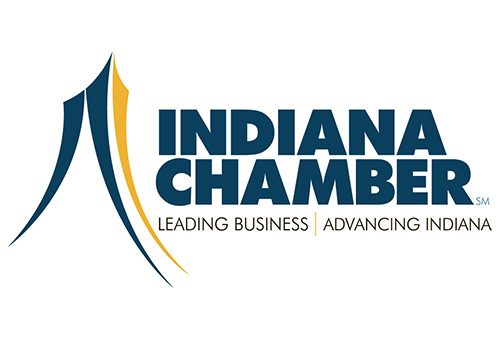
(INDIANAPOLIS) – The Indiana Chamber of Commerce continues to emphasize the need for state lawmakers to pass legislation to decrease the smoking rate of Hoosiers and get vaping products out of the hands of young people. The business organization also is promoting talent attraction efforts and the development of a state energy plan.
These priorities were among those unveiled Tuesday at the Indiana Chamber’s annual legislative preview in Indianapolis. A panel discussion featuring General Assembly leaders from both parties was also part of the event.

“Raising the age for the legal purchase of all tobacco and vaping products, increasing the cigarette tax and taxing e-cigarette products should fall into the no-brainer category,” says Indiana Chamber President and CEO Kevin Brinegar.
Between 2012 and 2018, vaping usage among Indiana high school students increased 387% and nearly as much among middle schoolers. Smoking causes Hoosier businesses more than $6 billion in annual productivity losses and increased health care costs.
“Families are suffering the tragic consequences of these addictions, and just last week we saw the state’s fourth vaping-related death. Voters have already shown strong support for these common-sense moves. There is no room for delay or making excuses. The state must step up and address these issues; we can’t wait on or depend on the federal government to act,” he added.
A pair of Indiana Chamber objectives for 2020 centers around economic development and talent attraction, and acknowledges that Indiana has more job openings than job seekers and the state’s own talent pool isn’t growing quickly enough.
“Hoosier employers are routinely missing out on hiring qualified individuals from other states or countries because of Indiana’s rigid professional licensing laws that essentially demand to relicense and don’t recognize a person’s existing credential,” Brinegar explains.
“The Indiana Chamber believes that unless a license is directly tied to people’s health or safety that our state licensing laws should be eliminated altogether or greatly relaxed.”
Another target area is boosting regional economies. A recent Indiana Chamber Foundation employer workforce survey underscored how important quality of place is for job-seekers. Nearly half of the employers surveyed said applicants were not attracted to the community where the company was located.
“The best way to grow regional economies and support local communities is by giving people closest to their constituents fund-deploying capabilities and letting local taxpayers hold them accountable. Therefore, we support empowering local communities in regions across Indiana to come together to create regional management authorities.
“This approach would incentivize local elected officials and business leaders to collaborate more and consider strategic investments for their regions that make them more attractive places to live, work and play.”
Ensuring high school students have access to financial aid is also on the Indiana Chamber’s agenda. The group wants to require most high school seniors to complete the Free Application for Federal Student Aid (FAFSA) form. Indiana lags behind its Midwestern peers in FAFSA filings, ranking 34th among all states.
“Right now, students are leaving money on the table. We want as many students as possible to have the opportunity to earn industry-recognized credentials and degrees with reduced or no debt,” Brinegar added.
Turning to energy, businesses are the state’s largest consumers – making the issue top of mind for the Indiana Chamber.
“As a state, we need to have a strategy in place to assure that we can continue to deliver energy to workplaces and residences that is adequate, reliable, affordable and cost-effective. The General Assembly and Governor have started work on this, but much more needs to happen.
“The Chamber will be conducting a comprehensive study of the issue in 2020 and will be able to provide additional insight into where the state stands now and where it needs to be in the future with resources and demands.”
The entire list of Indiana Chamber top legislative priorities:
- Addressing the vaping dangers and reducing the state’s smoking rate by increasing the legal purchase age on both from 18 to 21, as well as instituting a tax on vaping products and increased tax on cigarettes
- More transparency in health care costs and lessening the incidence of “surprise billing”
- Unemployment insurance tax liability certainty for employers while also ensuring fund solvency
- Reducing or eliminating unnecessary professional licensing requirements that can hinder talent attraction
- Create regional management authorities across the state to boost the quality of place funding to make local communities and economies more vibrant
- Development and implementation of a diversified energy policy that ensures the state’s continued access to adequate, reliable, affordable and cost-effective energy
- Strengthening Indiana’s high school accountability system to provide greater transparency and comparability for parents and more meaningful outcomes for students
- Requiring Indiana high school seniors to complete the FAFSA – with an opt-out option – so more receive financial aid and pursue credentials and degrees
- Significant investment in Indiana’s water infrastructure and prudent planning for the future
A detailed rundown of the Indiana Chamber’s 2020 key legislative initiatives (priorities and additional areas of focus) is available at www.indianachamber.com/priorities.



